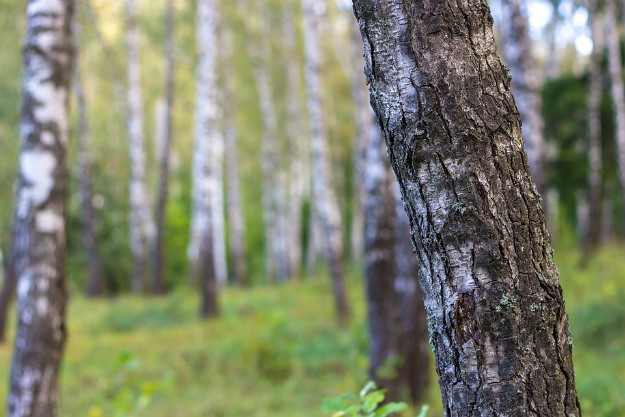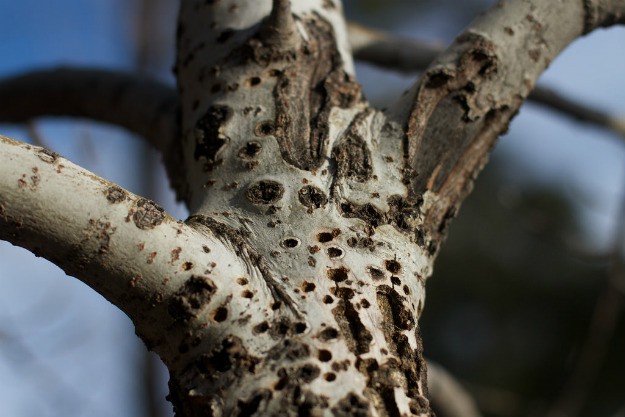Have you ever been sitting beside a beautiful campfire and suddenly you hear a snap, crackle, and suddenly a pop followed by little shards of burning embers flying all over the place? That wood you were burning was likely horse chestnut. Sure, all wood burns but it doesn’t all burn the same way or produce the same amount of heat. Knowing the qualities of the best firewood you will be burning can really save you a lot of work, hassle, and headache. My first time living off of the grid was full of learning experiences many of them involving wood.
Best Firewood For Warmth
For more information about learning to identify dry firewood from our friends over at Survival Life, check out this post!
The Best Burns
Ash – Steady flames with a nice heat output. It can be burnt while it is still green.
Beech – Steady flame, good heat. Burns best when fully dry.
Hawthorn – Burns hot and slow.
Rowan – Slow long lasting burn.
Yew – Very slow burn with a super-high-heat output.
Thorn – Great steady flame, awesome heat output and produces very little smoke.
The Next Best
Plum & Pear – Both of these produce a good amount of heat but the best results are achieved when they have been seasoned well for a good burn.
Oak – This heavy hardwood produces small flames and burns really slow. It at it’s best burning point after a year or two of being seasoned.
Maple – I’d rather have the syrup but if it must be burned it produces good flame, steady heat, and burns well.
Lilac – Another one I’d rather see living. The small dead branches and twigs make great kindling and tinder and the seasoned wood burns fairly well.
Hazel – This tree produces awesome heat output but burns really fast, I like to use it to get the stove ready for the long cold nights.
Horse Chestnut – This wood is best for burning inside of a wood stove because it tends to shatter and send sparks and flaming pieces of wood flying. Great flames and good heat just keep it burning in the stove.
Cherry – It smells so good when it burns and it provides a slow steady heat with a decent heat output.
Birch – Good heat but much like the hazel, it’s a quick burner.

Use If It’s All You Have Wood
The following trees on this list are all very poor burning woods.
Alder – It will burn but lacks the heat output but don’t cross it off your list, it’s perfect for warm summer night campfires.
Chestnut – Like the Alder, there’s little heat output and it doesn’t burn well.
Firs & Pines – Fir and pine trees produce a resinous sap that is released when it burns so it is not something you want to burn in a fireplace or wood stoves. It’s safe to burn them outdoors and they smell wonderful.
Eucalyptus – This wood burns really fast and also produces sap deposits that can catch fire like the fir and pine.
Poplar – Has a very poor burn and is super smoky.
Spruce & Willow – Both produce poor heat. The willow doesn’t burn well even if it has been dried.

There are loads of great pocket guides you can use to help you identify the trees in your area. Sometimes when you order wood from establishments or other people you will get a mix of all sorts of wood, which can be useful. As I mentioned before ALL wood burns, it just doesn’t all burn the same. I particularly like to have a combination of wood consisting of high and low heat outputs, fast and slow burners, and high or low flames. In the Autumn, sometimes it gets chilly which is a good time to burn your low-heat outputs with small flames. Having a nice assortment allows you to be able to control the heat, flame, and temperature in your home.
Whether you are heating your home, garage, or just having a little campfire knowing what kind of wood is good for what is very beneficial. Take my word for it, making S'mores over a hot smoky bed of poplar wood is terrible. The Arbor Day Foundation has a really awesome book for identifying trees using several methods titled What Tree Is That? I suggest you have a peek at it.
Next: The Benefits of Using A Wood Burning Stove On Your Homestead
Did you enjoy our post on Best Firewood To Keep You And Your Family Warm This Winter? Let us know in the comment section below!
Follow us on Instagram, Twitter, Pinterest, and Facebook!
Now that you know the best firewood, are you in need of a few wood burning products? Check out these options:
- Stay warm and heat up those s'mores with this Landmann 26364 23-1/2-Inch Savannah Garden Light Fire Pit
- Learn about different types of wood in-depth by reading this American Wood Type book!

Wi wood oak,I burned all,in past,Im a want a Bee Home steader,need info from you best places,retired health,Im 61 want to do,shack woods garden hunt Happy
Homesteading LIKE
Stick with this Homesteading site and you will learn so much!
I think you put ash up too high…..yes, good burner but nothing starts as easily as birch and, ash DOES burn up quick, leaving a fine ash, (no pun intended). I prefer a mix that leaves me some char wood also as I cool it, bag it, and use some to help with a quick light.
Nice insight John! Thanks for sharing!
One wood I would like to list as a wood to stay away from, unless it is all you have, is Cottonwood. Large trees with very large capillaries that allow grains of sand to travel from underground all the way to the top. It dulls saw blades/chains, and if burned when dry gives little heat and leaves a LOT of ash. My personal opinion is that it doesn’t smell very good when burning either. Your time and energy are much better spent on harder and better woods, again, unless that is all you have. If you do have to burn cottonwood you had better have a whole lot of it because you will go through it pretty fast.
What about olive?
Didn’t see sweet gum on your list.